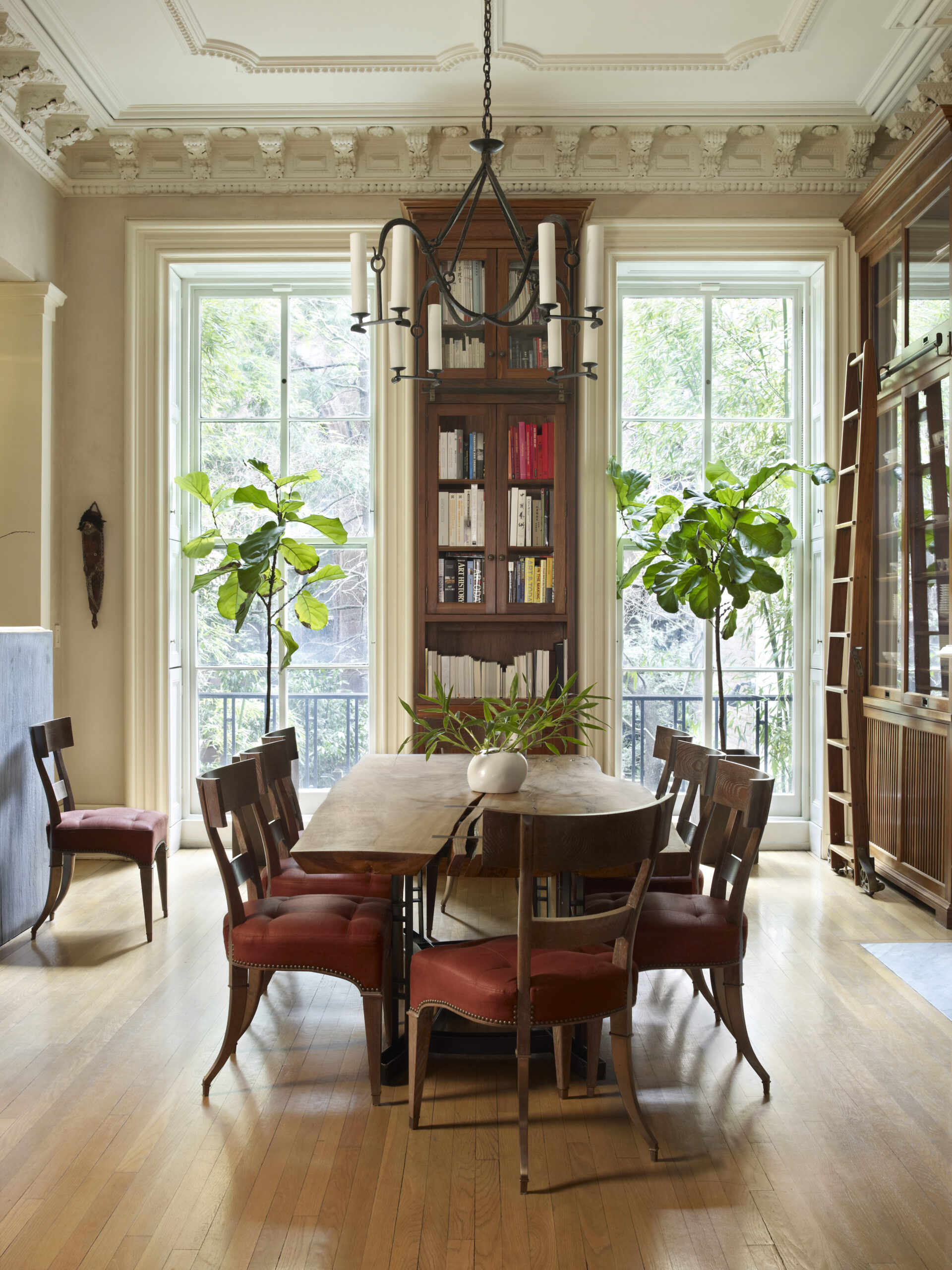
Designer: Kathryn Scott; more details below.
By Carl J. Dellatore

First, Happy New Year!
Like many of you, I consider January a time for rebirth, adopting an optimistic view for a new chapter ahead. January feels freshly minted and full of promise (even on the coldest New England day.) And January, like no other month, marks the passage of time.
In the final weeks of 2023, I found myself thinking about how time affects–and is reflected in–interior design. There’s no better source for contemplating those subjects than Belgian designer Axel Vreevordt’s 2011 book, Wabi Inspirations, which I highly recommend.
In its pages, Vervoordt’s rooms reveal the Japanese aesthetic philosophy of Wabi Sabi, which encourages an appreciation for imperfection, transience, and the beauty found in simplicity. “Wabi Sabi” comprises two distinct ideas: “Wabi” conveys rustic authenticity and a sense of understatement. At the same time, “Sabi” embodies the beauty that comes with the passage of time, acknowledging the inevitable impermanence of all things.
Vervoordt favors organic materials such as wood, stone, and natural fibers, celebrating their inherent irregularities and unique textures. Imperfect finishes, weathered surfaces, and irregular shapes are cherished, fostering environments that feel humble and connected to nature. He discourages excessive ornamentation and promotes a sense of modesty, crafting uncluttered spaces that allow for contemplation.
A critical element of Wabi-Sabi in design is the appreciation for the patina that develops over time, whether on wooden furniture, metal fixtures, or textiles. This acceptance of aging and wear adds character to spaces, telling a story of the object’s journey and creating a sense of warmth. Embracing restraint, Wabi-Sabi encourages a mindful approach to design, valuing the beauty of the mundane.

Axel Vervoodt’s rooms, or those designed by his American counterparts like New York-based Kathryn Scott or Los Angelenos Kathleen and Tommy Clements, are often austere. But monastic spaces aren’t to everyone’s taste. Perhaps your aesthetics differ: traditional, modernist, transitional. I celebrate them all; the variety excites my life as a design journalist. But no matter the design genre, I’ve always appreciated furnishings and finishes that give a room a sense of history.
Circling back to a conversation I had with Kathryn Scott, I’m reminded of something she said about patinated surfaces; it left an impression on me. “The desire to keep everything perfect—as if it has never been used—is quite unappealing and makes everything feel dead. Nothing in nature is perfect. The desire to keep everything new reminds me of mass production, whereas I find more beauty in handmade things fashioned from natural materials, especially as they age.”
The same logic applies to the architectural details in older homes.
Case in point: In the ‘90s, I purchased an eleven-acre poultry farm in Columbia County, New York, built in 1822, that had fallen into disrepair and set about bringing the farmhouse and the surrounding out-buildings back to life.
While I wanted modern living spaces with contemporary creature comforts, respecting the house’s age was paramount, so we removed the poorly seamed dryway throughout, replacing it with lath and plaster. We worked with a local salvage company, purchasing old kitchen cabinets and a glorious farmhouse sink. We removed all the cast iron hardware to restore and re-install throughout the house. But there was one detail we didn’t touch: the original pumpkin pine floors and, more specifically, the threshold saddles.
After nearly two centuries, the center of the saddles slopped dramatically, slowly worn down as the home’s former inhabitants traversed from the living room to the dining room, from the kitchen to the back porch. I remember seeing the wood and its hidden history when I first visited the property. Thinking about the laughter, the parties, and the prosaic evenings by the fire that preceded me there struck me as profound and somewhat poetic.
Don’t misunderstand me: I am not advocating for rooms full of broken-down, dilapidated pieces. No one wants to live in a ruin. That said, the distressed finish on an antique blanket chest or a tarnished brass lamp lovingly paired with a pleated silk shade places a room in the continuum of time in a way that a room fully populated with contemporary furnishings cannot. Call me nostalgic, but I would advocate that designers consider that as we enter the new year.
Stay updated on this series author, Carl Dellatore, by following his Instagram. About Carl Dellatore & Associates – provides designers, architects, and creatives with writing, editing, and copyediting services by an established team to effectively reveal your story.


